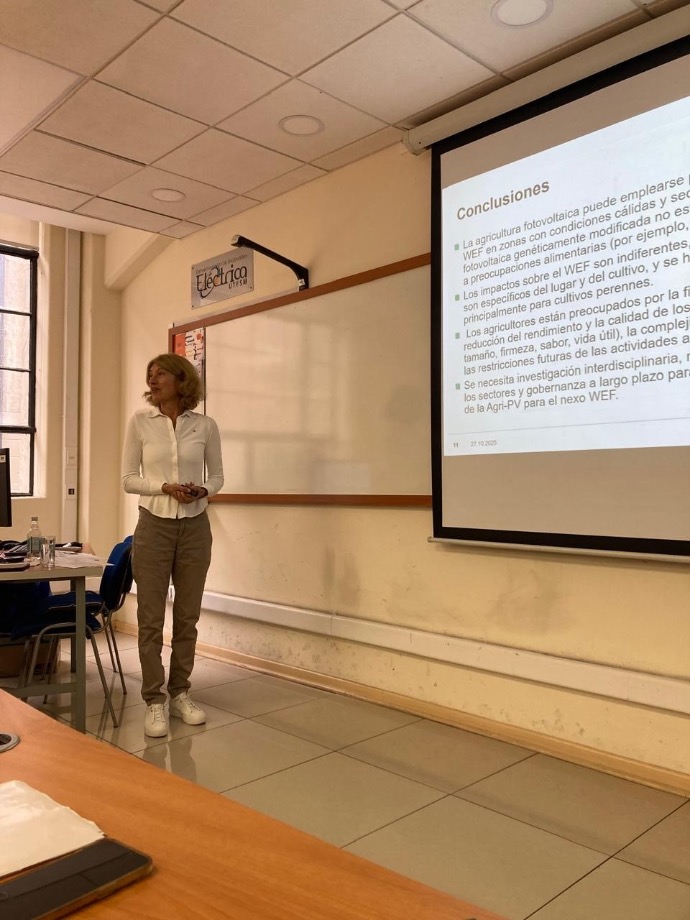In the European Union, the energy transition is no longer constrained by land availability but by the capacity of the electricity grid. Grid congestion—the inability of local networks to absorb and transmit renewable electricity—has become the key bottleneck in the deployment of solar and other renewable technologies.

Diverging national contexts in CIRCUS
Countries such as Germany, France, Belgium, and the Netherlands have well-established energy communities and highly developed solar energy regulations and markets. They now face both severe grid congestion and growing social concerns over land use for large solar parks. In contrast, Ireland’s solar sector is a late starter but is expanding rapidly, driven by favourable policy frameworks and growing investor interest.
Agrivoltaics—the dual land use technology
Agrivoltaics—the co-location of solar energy generation with crops and grazing—offers a promising approach in regions where conventional solar parks face planning restrictions or social opposition. It enables dual land use, combining food and energy production, and can mitigate land-use conflicts while supporting rural development.
Findings from the CIRCUS Public Participation GIS (PPGIS) tool applications across Germany, France, Belgium, the Netherlands, and Ireland demonstrate that legal frameworks, financial support schemes, and stakeholder attitudes differ markedly across the EU. To fully unlock the potential of agrivoltaics to supply local energy, reduce land-use competition, and adapt agriculture to climate change and weather extremes, a clear European definition and harmonised rules are needed. Such alignment would also enhance the applicability of the CIRCUS tool for identifying optimal agrivoltaic sites across regions.
Grid capacity—the real constraint
Experience with energy communities using the CIRCUS PPGIS tool shows that the major challenge for solar deployment is not land availability for agrivoltaics, solar parks or rooftop PV, but rather the limited grid capacity to feed generated electricity into the system. In Germany, recent policies address this issue through smart metering requirements for new solar installations and adjusted feed-in tariffs to prevent negative electricity prices during periods of overproduction. Notably, energy community projects with a capacity below 1 MW remain exempt from these new restrictions.
For agrivoltaics, in addition to grid access, alignment with the Common Agricultural Policy (CAP) and targeted pilot financing, robust scientific evidence on crop–system interactions is essential. Reliable data on optimal crop–PV configurations under different climatic and spatial conditions will improve system design and performance.
Supporting energy communities
through digital tools
The CIRCUS PPGIS tool helps energy communities locate areas where agrivoltaic investments can generate the greatest combined benefits for food and energy production. These include higher land-use efficiency, diversified farm incomes, reduced land-use conflicts, and environmental co-benefits such as improved microclimates and water savings. Moreover, the tool fosters awareness, procedural fairness, and distributive justice in the planning and design of agrivoltaic systems.
Germany leading the way
Germany has emerged as a frontrunner in formalising agrivoltaics, introducing amendments and pilot schemes that simplify permitting for smaller, farm-based systems under the Renewable Energy Act (EEG). To ensure fair competition, EU and national support mechanisms must recognise the dual-use benefits of agrivoltaics and compensate for its higher investment costs and agronomic risks. Common technical standards, crop-specific guidelines, and monitoring protocols are also needed to safeguard agricultural productivity and environmental quality.

The road ahead
Applying the CIRCUS PPGIS tool reveals that agrivoltaics have significant potential to mitigate land-use conflicts and enhance rural communities’ acceptance of renewable energy. However, their success depends on active community engagement, transparent governance, and landscape-sensitive planning. As Europe accelerates its energy transition, the critical challenge is not to find more land for solar installations, but to expand grid capacity, strengthen knowledge sharing, and secure political and financial support for local energy production led by energy communities. Meeting local needs and expectations requires such community-based approaches. Moreover, on-site energy use for irrigation, as well as energy sharing among neighbors and local stakeholders, can help bypass grid bottlenecks, increase energy resilience, and enhance local value creation.